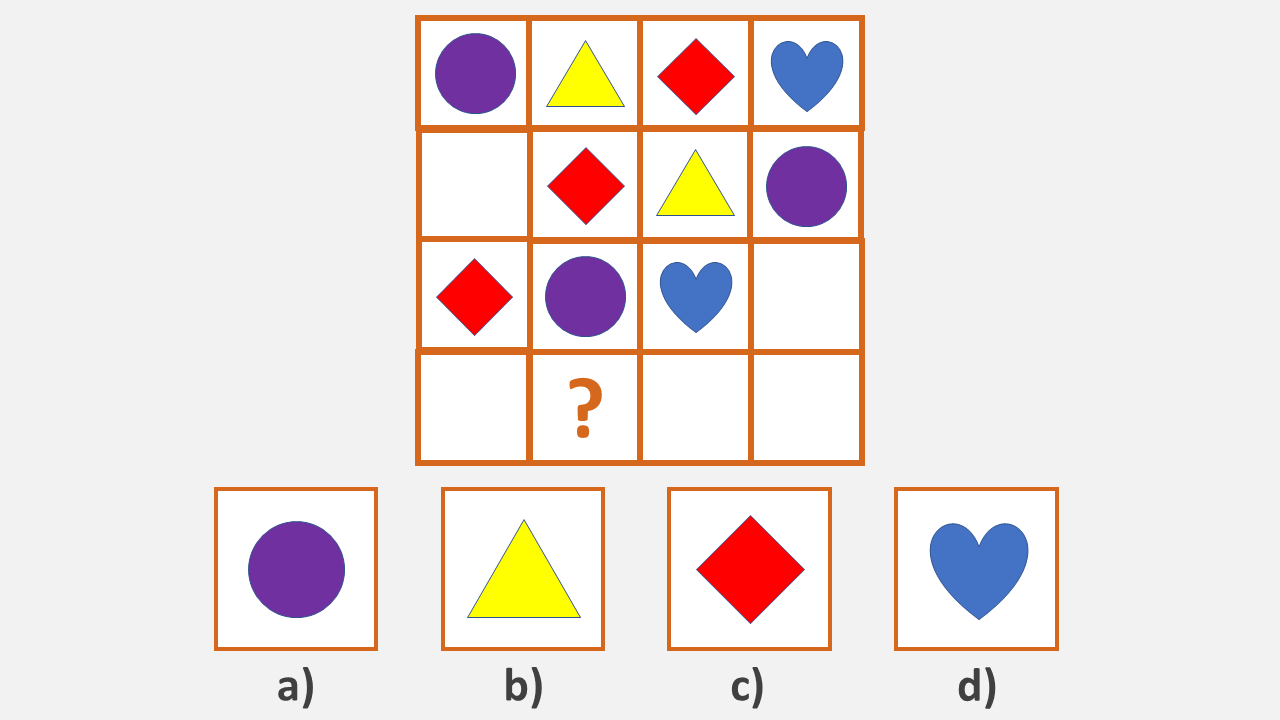Cut-e Test: Guide & Tips for 2026
Updated November 6, 2024
- What Is a Cut-e Test?
empty
empty
empty
empty
empty
- Cut-e Test Practice
empty
empty
- How Are Cut-e Assessments Scored?
- How to Prepare for the Cut-e Exams in 2026
- Frequently Asked Questions
- Final Thoughts
Cut-e tests are a form of online psychometric assessment used by employers. Tests include personality assessments and numerical logical and verbal reasoning.
Cut-e tests are administered online, some employers use the gamified version of the test when assessing candidate’s characteristics, traits and abilities.
When recruiting for roles, employers must ensure that candidates in their applicant pool meet the requirements of the position they have to fill.
One way of determining this is by including a pre-employment screening assessment.
Using such an assessment provides employers with an objective way of filtering their applicant pool down to those demonstrating the required aptitudes and characteristics.
One form of pre-employment screening assessment used by many employers is Cut-e tests.
These assessments designed and developed by AON is an online assessment that candidates typically complete in the early stages of the application process.
This article explores the different types of Cut-e tests most commonly used by employers and how you can prepare for these assessments.
Also included are practice questions that outline the kinds of questions you may face when sitting the test.
What Is a Cut-e Test?
The Cut-e tests were designed and developed in 2002 by Cut-E, a psychometric assessment and talent management company.
AON then acquired the company in 2017; since then, the Cut-e test is also referred to as the AON Cut-e test.
The primary purpose of the Cut-e tests is to provide employers with a cost-effective and easy-to-administer way to identify candidates within their applicant pool who demonstrate the necessary criteria needed for the roles they have to fill.
The Cut-e is a popular test used by many employers as part of their recruitment process, such as:
- Virgin O2
- Deloitte
- Accenture
- Easyjet
- Siemens
Generally administered in the early stages of the recruitment process, the test focuses on assessing individuals' aptitudes that employers across various sectors deem essential for success in a role.
Cut-e have developed a suite of online assessments, including questionnaire and ability tests.
The tests most commonly used by employers include:
- Numerical reasoning
- Verbal reasoning
- Logical reasoning
- Personality assessment
Each test is distinct and assesses one specific aptitude, meaning applicants often need to sit many Cut-e tests as part of their recruitment process.
Given that the tests can be completed online, the tests are a convenient way for employers to filter their applicant pool down to candidates with the required level of numerical, verbal and logical reasoning required for the role.
Practice Cut-e Test with JobTestPrep
What are The Cut-e Test Types
There are several Cut-e tests available for employers to use.
Each test evaluates an individual’s aptitude in a particular area, meaning that the format and structure of the questions in the test vary according to the test type.
All Cut-e tests are online tests that need to be completed on a PC or laptop, with some employers may offer a gamified version of the test.
Candidates can use a notepad and pen to aid in any calculations or workings.
The most different Cut-e tests are split into two groups:
- Aptitude tests – Numerical reasoning, logical reasoning, verbal reasoning
- Personality assessment
We will now look at each of these tests in more detail.
Take a Cut-e Test with JobTestPrep
Cut-e Numerical Reasoning Test
There are two types of Cut-e numerical reasoning tests:
- Cut-e numerical reasoning (scales numerical)
- Cut-e numerical reasoning (scales eql)
Cut-e Scales Numerical Reasoning Test
The most commonly used Cute-e numerical reasoning test is the scales numerical.
This test assesses an individual’s ability to use numerical data to solve problems and form logical conclusions. Questions take the form of charts, tables or graphs.
This data relates to one organisation or company and could cover expenses, budget or costs.
Candidates need to use their numerical reasoning to determine whether the statement is ‘false’, ‘true’ or they ‘cannot say’ based on their calculations.
This test comprises 37 questions with a time limit of 12 minutes for completion.
Cut-e eql Test
Less commonly used is the Cut-e eql test. The format of this assessment differs from the scales numerical test in that the test lasts five minutes.
Questions are formed from an incomplete equation with a list of multiple-choice answers.
Candidates need to select which of the multiple-choice answers contains the symbols or numbers to fill in the blanks in the equation.
Both Cut-e numerical tests required candidates to use their practical working knowledge of basic mathematical concepts such as percentages, ratios, conversions or fractions.
It is worth noting that the Cut-e tests are aligned to the position level—the more senior the role, the more challenging the test.
Cut-e Logical Reasoning Test
The basis of the logical reasoning test is to evaluate an individual's ability to make logical inferences from the information.
Five Cut-e logical reasoning assessments assess a candidate's inductive, deductive and overall logical reasoning abilities.
The time limit for these tests is usually 12 minutes. Again, the type of test used will be dependent on the role.
- Cut-e Scales clx
- Cut-e Scales cls
- Cut-e Scales ix
- Cut-e Scales sx
- Cut-e Scales lst
Cut-e Scales clx Test
The Cut-e Scales clx test tests a candidate's inductive logical reasoning ability. In this assessment, questions are given as grids or tables with the squares in each grid containing a symbol.
Candidates need to determine the rule or relationship that links the two grids on the same side together.
Once this has been determined, using this rule or relationship, candidates need to select which two of the four grids given on the right-hand side are correct and follow the rule.
The test lasts six minutes, with all questions following the above format.
Cut-e Scales cls Test
This test evaluates an individual's inductive logical thinking ability.
Questions require candidates to determine the relationship or pattern between sets of information, then use this rule or relationship to select which of the multiple-choice answers is correct.
In the Cut-e clx test, questions are presented in the form of tables or grids. Each square in the table or grid shows a number or a letter.
There are 10 grids, six of which belong to one coloured group.
Candidates need to use their inductive reasoning to identify the rule or relationship between the grids and select which of the four remaining grids belongs in each of the two coloured groups.
There are 12 questions to answer within the 12 minute time limit.
Cut-e Scales ix Test
Again assessing an individual's inductive logical reasoning, questions in the Scales ix test comprise a series of nine objects.
A symbol, shape or line is in the middle of each object.
Candidates need to identify the rule or pattern that governs these objects and then use the governing rule to determine which one of the nine objects does not fit in the series.
The time limit for the Scales ix test is five minutes.
If you need to prepare for a number of different employment tests and want to outsmart the competition, choose a Premium Membership from JobTestPrep.
You will get access to three PrepPacks of your choice, from a database that covers all the major test providers and employers and tailored profession packs.
Cut-e Scales sx Test
The Scales sx test is a deductive logical thinking assessment. Questions depict three objects that a rule or operator links.
Candidates need to decipher the rule and operator that governs the transformation of the objects, then pick which of the objects given as multiple-choice correctly completed the pattern or sequence of objects.
Cut-e Scales lst
Questions are presented as grids in this test of a candidate's deductive logical reasoning.
In each grid's squares is a symbol such as a triangle, square or cross.
Candidates need to determine what symbol should be inserted into the squares containing question marks bearing in mind that only one symbol can be inserted into a row and a column.
Cut-e Verbal Reasoning Test
Verbal reasoning tests assess an individual’s verbal comprehension and aptitude to read and analyse text passages and make logical inferences from their understanding.
The Cut-e verbal reasoning test is formed of short text paragraphs within several different tabs.
The tabs of information also contain graphs, tables or visual information, requiring the candidate to locate the necessary information to answer the question.
Candidates must switch between the tabs of information and then state whether the statement that follows is ‘false’, ‘true’ or they ‘cannot say’ based on their understanding of what they have read.
While this test only lasts 12 minutes, there are 47 questions to get through, meaning the speed of answering is essential.
Cut-e Personality Assessment
The Cut-e personality assessment differs from the Cut-e aptitude tests in that, unlike the aptitude tests, there is no right or wrong answer.
The personality assessment evaluates an individual’s characteristics, traits and values to see whether they match those needed in the role and succeed at the organisation.
There are 100 questions in this test that are structured as two different sets of statements.
Candidates need to indicate a preference but may select ‘slightly disagree' or ‘agree’.
Using the slider, candidates must show their preference in the given situation on the scale.
It is worth noting that the slider can not be placed in the middle of the scale.
Cut-e Test Practice
Before sitting the Cut-e tests it is essential to practice the test you will be asked to complete.
Outlined below are some example questions for each of the Cut-e ability test types.
Numerical Ability Example Test Questions
40 families will receive an equal distribution from a total of $52,000 donations. If 33 families have already received their share, then ______? is remaining for the other families.
a) $9,100
b) $13,000
c) $9,300
d) $10,300
| Sales Figures | ||
|---|---|---|
| Employee | Month 1 | Month 2 |
| Jason | $6,733 | $6,453 |
| Maddie | $2,436 | $1,287 |
| Elise | $7,856 | $4,376 |
| Eben | $2,376 | $6,912 |
In month 3, Eben’s sales figures were better than Jason’s?
a) False
b) Cannot say
c) True
Dean is sitting in seat 453 at a football game. Caroline was sitting to the right of Dean in seat 454. In the left of Dean was Tom. Peter was sitting to the left of Tom.
What is Peter’s seat number?
a) 455
b) 451
c) 456
d) 454

Replace the '?' with the correct shape.

Select the correctly spelled term:
a) Informidable
b) Forceful
c) Luominus
d) Interfeare
The holiday company Ski Central has a highly rated customer service team.
The customer response guidelines state that the company must respond to all enquiries within 48 hours by phone, email or their social media channels such as twitter, facebook or Instagram.
In 2021 analysis showed that 58% of customer enquiries were responded to in 24 hours, 21% of enquiries responded to in 30 hours and 21% of enquiries responded to within 48 hours.
Question: Ski Central’s customer enquiry response time met the guideline set by the organisation.
a) Cannot say
b) True
c) False
How Are Cut-e Assessments Scored?
All Cut-e ability tests are scored the same way: questions answered correctly are awarded one point, and a point is deducted if a question is answered incorrectly.
Different employers that use the Cut-e tests as part of their recruitment process will all have their own specific benchmark for success in each of the Cut-e test types.
The Cut-e personality assessment is scored differently from the ability tests. The results from this assessment are used to see if a candidate’s answers and preferences in behavioural traits and values match those of the organisation.
Once the tests have been scored, the results are securely sent to the organisation. Usually, these results are not shared with candidates but can be requested if desired.
Depending on the employer, candidates that are not successful in the Cut-e tests can resit the tests.
Many employers state that a set amount of time has elapsed before the test can be retaken. This varies by employer but can often be up to six months, if not longer.
How to Prepare for the Cut-e Exams in 2026
The Cut-e test is challenging for many candidates. Preparation is vital to perform to the best of your ability.
Step 1. Understand the Question Format and Type
There are many different formats of questions used in the Cut-e tests. Ensure you know what tests you will complete and what the test type is.
The naming of the Cut-e tests is confusing, so it is essential to be clear on the test type.
Step 2. Practice the Test Online
Practicing tests online helps you become familiar with the way you select your responses to questions and what the time limits feel like in practice.
It also ensures that you have the correct features downloaded on your PC to enable the test to run.
Step 3. Learn to Work Under Time Pressure
All of the Cut-e tests are timed tests. Staying calm when working under pressure, reading the question carefully and effectively managing your time are all ways to ensure you answer as many questions as you can correctly in the allotted time.
Don’t dwell too much on a single question.
The more questions you answer correctly, the higher your score will be.
Cut-e tests are a set of assessments employers use to determine whether individuals in their applicant pool have the inherent abilities required to succeed in a role.
The Cut-e assessments, most commonly used by employers, assess individuals on their numerical, logical and verbal reasoning.
Each Cut-e test comprises specific questions that assess a single aptitude. The number of questions in each test varies depending on the test.
Some tests have unlimited questions, with the aim being to answer as many questions in the allotted time correctly.
The best way to prepare for the Cut-e assessment is to practice the tests. Practice tests can be found at JobTestPrep.
Before taking the test ensure you are well rested, have eaten and are well hydrated meaning you can fully focus on the test and perform to the best of your ability.
The Cut-e test is a rigorous assessment of an individual’s aptitudes. To ensure you perform at your best, it is essential to practice the test.
When taking the test, read the question carefully, manage your time and keep calm.
Several organisations across a variety of sectors use Cut-e tests. These include Deloitte, Accenture, Emirates and BNP Paribas.
It is worth noting that many employers work with AON to create bespoke tests for the organisation. Some Cut-e tests may also be gamified versions.
The passing score for the Cut-e assessment varies by employer. Each employer will set its own benchmark.
Candidates whose scores meet this benchmark are successful in the test. When completing the test, points are awarded for a correct answer, and points deducted for an incorrect answer.
To ensure you attain your highest score, it is essential not to focus too much on any one question and manage your time effectively.
When practicing Cut-e tests, it is important to practice the test types that you will be asked to sit as part of an employer's recruitment process.
Doing this means you become familiar with the structure of the questions and the time pressure you will feel when taking the actual test.
Practice tests can be found at JobTestPrep.
The passing rate for the Cut-e test varies by employer.
When taking the test, focus on attaining your best score by managing your time effectively, reading the question carefully and practicing the test before test day.
After taking the Cut-e test, the next step will depend on the employer.
Candidate's who attain an employer's benchmark in the Cut-e assessment may progress to interview stage; some may include specialist assessments.
Before taking the test, it is advisable to ensure you know the recruitment process for your applied role.
The time limits for the Cut-e test vary according to the test type. Before taking the test, ensure you are aware of the allotted time for the test.
This means you can manage your time effectively and correctly complete as many questions as possible.
Following completion of the Cut-e assessments, test results are sent directly to the hiring organsation.
Typically, candidates who have taken the Cut-e test will be informed whether they have been successful at the testing stage by their prospective employer. Timings for this vary by employer.
There are several sites where candidates can practice sample questions for the Cut-e test. These include practice tests on JobTestPrep.
When practicing test it is advisable to simulate test conditions meaning you become used to the pressure and nerves you will feel when taking the actual test.
Final Thoughts
The Cut-e assessment is a suite of online psychometric tests.
Employers use Cut-e tests to determine which candidates in their applicant have the aptitudes needed for the roles they have to fill. There are several types of Cut-e tests, each assessing a specific ability.
The most commonly used aptitude tests assess numerical, logical, and verbal reasoning.
Many employers also use personality assessments to evaluate whether a candidate's traits and behavioural preferences match the organisation's culture.
To do well on the Cut-e tests, it is essential to practice them.
While the aptitudes and characteristics of an individual are inherent, practicing tests ensures that you perform to the best of your ability.
In doing so, you give yourself the best possible chance of attaining a score that meets the benchmark for passing the test.





